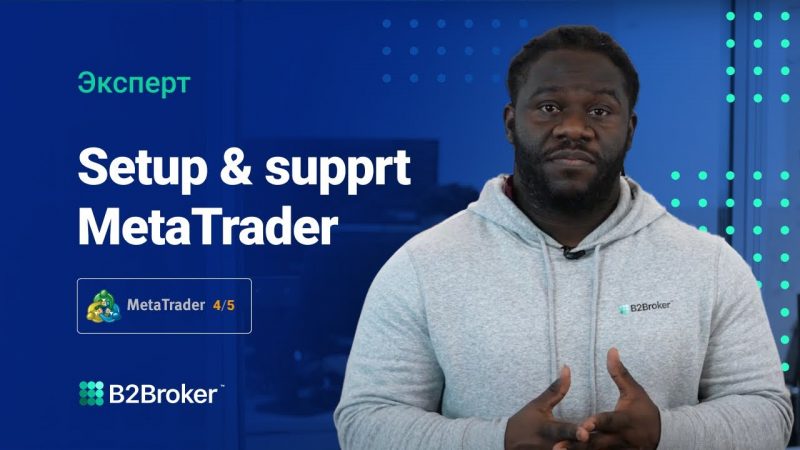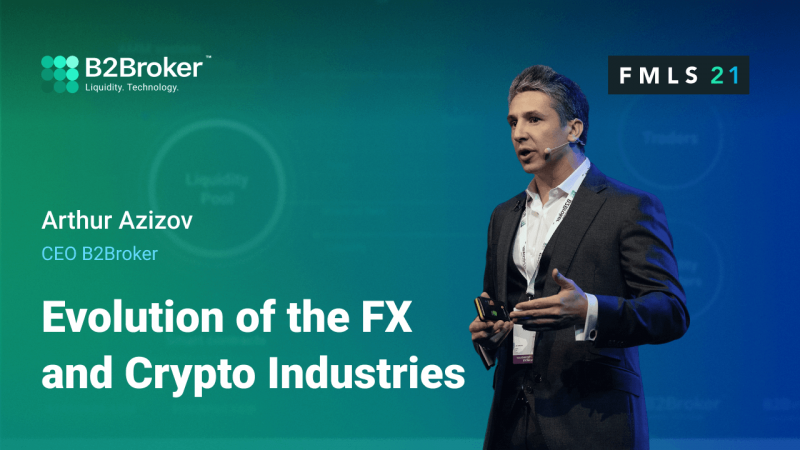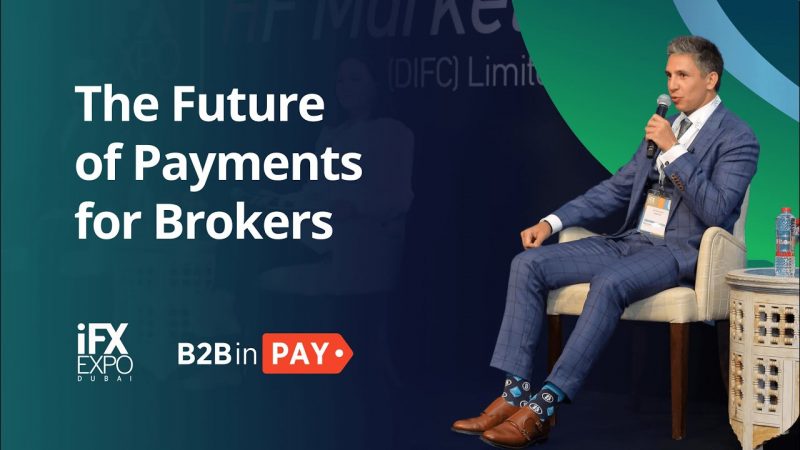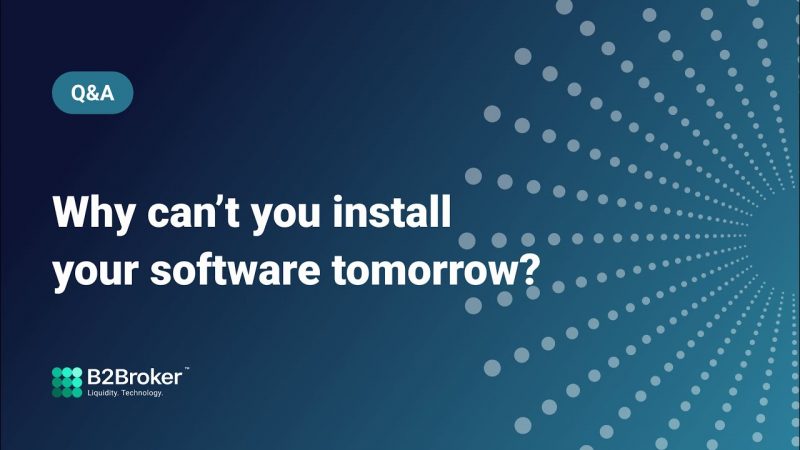Comparison of
Business models
Compare business models at a glance. Identify the best solution for your requirements that perfectly aligns with your business strategy.
Back to comparison
MetaTrader* 4 – MetaTrader* 5
MetaTrader* 4 – MetaTrader* 5
MetaTrader* 5
MetaTrader* 4
MetaTrader* 5
MetaTrader* 4
features
Partial Order Filling Policies?
Policies to fill trading orders partially according to order time in force type.
Order Fill Policy?
Order time in force (TIF) instructions to specify how long an order will remain active before it is executed or expires.
FOK
IOC
Return
IOC
Return
FOK
Pending Order Types?
Order types to execute once specified conditions triggered.
Buy Limit
Sell Limit
Buy Stop
Sell Stop
Buy Stop Limit
Sell Stop Limit
Sell Limit
Buy Stop
Sell Stop
Buy Stop Limit
Sell Stop Limit
Buy Limit
Sell Limit
Buy Stop
Sell Stop
Sell Limit
Buy Stop
Sell Stop
Depth of Market?
Measure of the supply and demand for tradable assets
Exchange data?
Volume, price, direction, date, and time data for each trade that is executed on the exchange
Time & Sales ?
Volume, price, direction, date, and time data for each trade that is executed on the platform
Internal Email System?
Internal email service to notify clients directly into the platform.
Account Types?
Account types available on the platform, with different position management systems
Netting
Hedging
Hedging
Hedging
Execution Modes?
External, Internal and Hybrid methods for client order confirmations.
A-book (through paid gateways), Warehouse
A-book (through paid gateways), Warehouse
Quotes Filtration?
Spikes and non-market price protection
Exchange Trading?
Possibility to send limit orders directly to exchanges
(through paid gateways)
Tiered Markups?
Synthetic market depth with tiered markups on different levels of trading volume
Tiered Margin Requirements?
Dynamic leverage settings allows to set different margin requirements on different levels of trading volume
Not available From the box
Not available From the box
Trader Selected Leverage per order?
Dynamic leverage settings allows to set different margin requirements on different levels of trading volume
Markup is Applying to Charts and Time & Sales Data, Individually?
Price markups affect to charts and Time and Sales data according to individual client markup settings
Integrations
Integrations with Makers?
Connectivity methods to liquidity providers
Gateway API
Server API
ManAPI
Server API
ManAPI
Gateway API
Server API
ManAPI
Server API
ManAPI
Taker integrations?
Connectivity methods for liquidity takers
MT* 5 Gateway for MT* server to MT* server connection
MT* 4 Gateway for MT* server to MT* server connection
Supported Markets?
Types of trading instruments supported by platform
Forex
CFD Metals
CFD Indices
CFD Commodities
CFD Stocks & ETFs
CFD Bonds CFD Cryptocurrencies
Stocks
CFD Metals
CFD Indices
CFD Commodities
CFD Stocks & ETFs
CFD Bonds CFD Cryptocurrencies
Stocks
Forex
CFD Metals
CFD Indices
CFD Commodities
CFD Stocks & ETFs
CFD Cryptocurrencies
CFD Metals
CFD Indices
CFD Commodities
CFD Stocks & ETFs
CFD Cryptocurrencies
Platform Limits
Trading Symbols?
Maximum number of trading instruments available on the platform
Unlimited
1024 max
Security Groups?
Maximum number of groups for trading instruments available on the platform
Unlimited
32 max
Trading Groups?
Maximum number of active trading accounts (live accounts allowed to trade) available on the platform.
Up to 200000, depends on the license type
Up to 100000, depends on the server load
Settings & Configurations available for White Label
Markup Settings, Configuration level?
Order routing settings, allow to set execution methods on different levels of clients and instruments
Min/Max Order size, Order size increment, Configuration level?
Order size settings, allow to change Min/Max order size and order size increment on different levels of clients and instruments
Trading Mode Configuration level (Open/Close only/Closed)?
Trading mode setttings, allow to enable or disable trades on different levels of clients and instruments
Available trading instruments, Configuration level?
Available trading instruments settings, allow to show or hide trading symbols on different levels of clients and instruments
Margin requirements, Configuration level?
Margin requirement settings, allow to define leverages on different levels of clients and instruments
All clients, Group of clients
Tiered Margin, Configuration Level?
Tiered margin requirement settings, allow to define leverage by tiers on different levels of clients and instruments
Client selected margin requirements, Configuration level?
Client selected margin requirement settings, allow to define a range of available leverages on different levels of clients and instruments
Margin Call/Stop Out, Configuration Level?
Margin call/Stop out settings, allow to define margin call and stop out levels on different levels of clients and instruments
Order Routing, Configuration Level?
Order routing settings, allow to set execution methods on different levels of clients and instruments
Commissions, Configuration settings?
Commission settings, allow to define commissions on different levels of clients and instruments
Group of clients
Swap and Interest rate markups, Configuration level?
Swap and Interest rate markup settings, allow to set markups on swaps and/or interest rates on different levels of clients and instruments
Group of clients
Settings & Configurations available for license owners
Markup settings, Configuration level?
Price markup settings allow to add markups on different levels of clients and instruments
Min/Max order size, order size increment, Configuration level?
Order size settings, allow to change Min/Max order size and order size increment on different levels of clients and instruments
Group of clients
Available for MT* owners
Available for MT* owners
Group of clients
Available for MT* owners
Available for MT* owners
Trading Mode Configuration level (Open/Close only/Closed)?
Trading mode setttings, allow to enable or disable trades on different levels of clients and instruments
All clients
Available for MT* owners
Available for MT* owners
All clients
Available for MT* owners
Available for MT* owners
Available trading instruments, Configuration level?
Available trading instruments settings, allow to show or hide trading symbols on different levels of clients and instruments
Group of clients
Available for MT* owners
Available for MT* owners
Group of clients
Available for MT* owners
Available for MT* owners
Margin requirements, Configuration level?
Client selected margin requirement settings, allow to define a range of available leverages on different levels of clients and instruments
All clients
Available for MT* owners
Available for MT* owners
All clients
Available for MT* owners
Available for MT* owners
Tiered margin, Configuration level?
Tiered margin requirement settings, allow to define leverage by tiers on different levels of clients and instruments
Not available from the box
Not available from the box
Client selected margin requirements, Configuration level?
Client selected margin requirement settings, allow to define a range of available leverages on different levels of clients and instruments
Margin call/Stop out, Configuration level?
Margin call/Stop out settings, allow to define margin call and stop out levels on different levels of clients and instruments
Group of clients
Available for MT* owners
Available for MT* owners
Group of clients
Available for MT* owners
Available for MT* owners
Order routing, Configuration level?
Order routing settings, allow to set execution methods on different levels of clients and instruments
All clients,
Group of clients,
Specific client.
Available for
MT* owners
Group of clients,
Specific client.
Available for
MT* owners
Not available
from the box
from the box
Commissions, Configuration settings?
Commission settings, allow to define commissions on different levels of clients and instruments
Group of clients.
Available for MT* owners
Available for MT* owners
Group of clients.
Available for MT* owners
Available for MT* owners
Swap and Interest rate markups, Configuration level?
Swap and Interest rate markup settings, allow to set markups on swaps and/or interest rates on different levels of clients and instruments
Group of clients.
Available for MT* owners
Available for MT* owners
Group of clients.
Available for MT* owners
Available for MT* owners
Settings & Configurations available for license owners
Detailed Exposure monitor With Broker positions?
Exposure table, contains net open client and broker positions with comparison and PnL details
Client NOP Only
Client NOP Only
Broker positions and orders monitor?
List of orders and positions routed to external liquidity source or margin account
Access to WL logs for White Label managers?
Logged details of all client and broker trades and actions


05:58
B2Broker: An Overview of the Company’s Set Up and Support Service for MetaTrader* Systems
In this informative video, Conrad Simon, Dealing Desk Specialist at B2BROKER, explains to viewers how the company’s Set Up and Support Service for MetaTrader* 4 & 5 systems works.
Back to comparison
Types of crypto liquidity
Types of crypto liquidity
Crypto Spot
Crypto CFD
Perpetual Crypto Futures
Spot Margin
Futures
Crypto Spot
Crypto CFD
Perpetual Crypto Futures
Spot Margin
Futures
Commissions
High
Medium
Low
High
Low
Extra rollover charges for carrying position over time
Swap rates every day. Almost always negative for a trader
Funding rate multiple times a day. Not rarely it is positive for a trader.
Continuous interest rate
Ability to profit from recuring payments
Rarely but yes (from positive swaps)
Yes (with funding)
Average Volume Traded
Low
High
High
Low
High
Leverage
Short positons
Ability to choose different leverage
Depends on platform
Wide range
Limited but yes
Wide range
Potential to lose more than 100% investement
24/7 trading
Order book available
Limited
Can be traded along other asset types on one account
Exchange of actual asset
At Expiration
Available on exchange
Available with LPs
Coming Soon
Overall complexity of use
Very Simple
Leverage and swap rate management but overall easiest out of all derivatives
Funding rate and leverage management
Very simple but sound leverage management is required
Leverage and expiration management
Liquidity customization opportunities
No
Can include any liquidity including aggregated pool. Allows backups
No
No
No


19:40
FMLS 2021: B2BROKER CEO Arthur Azizov Keynote Speech
B2BROKER CEO Arthur Azizov’s recent keynote speech at FMLS21 spans across a wide range of topics starting with an overview of the expanding range of instruments now available for trading such as CFDs and perpetual futures. Arthur follows on with a discussion on Stablecoins and new blockchains that he is deeply knowledgeable about. He goes on to explore different models of aggregation and distribution of spot liquidity and concludes by sharing his insights about new technologies for Crypto payments and possibilities for using DeFI platforms.
Back to comparison
Merchant - Enterprise Solution
Merchant - Enterprise Solution
Minimum Deposits & Withdrawals
Check out our minimum deposits recommendations per currency
Explore page


45:24
Still Processing: The Future of Payments for Brokers and Beyond
This video sees CEO Arthur Azizov take his seat on the Still Processing: The Future of Payments for Brokers and Beyond panel on behalf of B2BINPAY, the company’s crypto processing solution. In this session, Arthur joins in a discussion on how with soaring number of new investors entering the market and trading volumes shooting up, a robust and secure payments system is more crucial than ever.
Back to comparison
SaaS - Self-Hosting
SaaS - Self-Hosting
SaaS
Self-Hosting
Comments
SaaS
Self-Hosting
Comments
Stability of deployment
High
Low
In order to ensure in-system stability after updating it, you will need a staging environment where all updates can be comprehensively tested before being released in production.
Speed of updates
High
Low
In SaaS, the vast majority of processes are automated. Providers’ engineering teams benefit from being able to unify updates for all clients at once, hence any problems resolved for one client is resolved for all. In the event of any trouble, fixing it usually takes longer for an independent team and self-hosting solution.
Costs for Hosting/On-premise
Low as the provider itself benefits from economies of scale for hosting the underlying infrastructure.
High because TCO usually includes 100% upfront and infrastructure maintenance costs.
SaaS model is usually built on a pay-as-you-go basis minimizing the final price that is actually being used by the client.
Costs for administration
Low, included in the standard price.
High, extra to the standard price. Unexpected expenses are possible in case of hardware breakdown.
The price of a SaaS solution includes development and support costs. Client is free from worries about additional costs. The self-hosting option implies the hiring of a development team to support the whole infrastructure and other additional expenses.
Speed of reaction to problems
High
Moderate or slow
A SaaS provider has a dedicated support team to react as fast as possible.
Product/Performance control
SaaS provider
Client
In case of a self-hosting solution, more controls may be available but keep in mind that additional responsibilities come with controls too.
Infrastructure security
Provider
Client
SaaS offers higher levels of infrastructure security compared to self-hosting as SaaS providers themselves often build an infrastructure using managed HA PaaS services.
Infrastructure costs
Low
High
Costs to set up and maintain the infrastructure.
Setup Speed
Fast
Slow
Time to Market is the lowest for SaaS as the client doesn’t have to think about the underlying infrastructure.
Support Efficiency
High
Low
It is difficult to understand the root of the problem if there is no "access".
Customizations
Depends on priority and importance, otherwise high
Moderate
Due to the established CI/CD process the SaaS provider can implement customizations quicker but it depends on the priority and importance of the sought-after customization.
Usage complexity
Fair
Depends
Usage complexity is more balanced with SaaS as the provider is in charge of underlying infrastructure.


04:36
Why does it take as long as 3-4 months to install a WL solution?
A series of questions in Q&A format received from current and potential clients posed by the B2BROKER team to CEO Arthur Azizov with expert advice from the top for those looking to start a brokerage business.
Back to comparison
White Label - Source Code - Custom Development
White Label - Source Code - Custom Development
White Label
Source Code
Custom Development
Outsourcing
White Label
Source Code
Custom Development
Outsourcing
Starting Cost
Low
For just the cost of creating a technical assignment, you can deploy a full-fledged WL solution and start working straight away. Highest
Code buybacks and custom development are long and expensive processes. Time is needed to check through code and costs are usually higher High
Custom development can be very expensive as the costs and man-hours involved in employing experienced talent are high. Moderate
Outsourcing does not require significant funding as there are a lot of vendors that offer great deals in terms of developing the product for you. Ongoing Cost (Maintenance)
Low
Effective WL maintenance requires the input of 2-3 developers per month. High
You need to maintain an IT team and depending on which region you are located, it can be quite costly. The bigger the project, the larger the team and the higher the expenses. High
Choosing a custom option is even more expensive in the long run as it involves the cost of retaining the development team after the main development is completed. Moderate
There is a high risk of miscommunication and shifts in deadlines. Evolution Speed
High
WL solution evolves faster compared with other methods as a larger development team means a lot more customers where thousands of requests can be dealt with efficiently. A single backlog aggregates many new ideas where innovative features get prioritized and implemented continuously. Slow
After the initial development it may be difficult for the system to evolve. Failures in the planning stage or inner architecture may arise that will slow down the implementation of any new features significantly. Moderate
Similar to the ‘Source code’ option but not as fast as using a WL solution as you don't profit from economies of scale. Medium
Building from scratch is long, is always hard as apart from programming you need to get everyone to understand why they are doing it, you will need to be involved in everything to keep a steady pace. Time to Market
Fast
Slow
Slow
Average
Customization freedom
Moderate
As long as B2BROKER retains full knowledge about WL internals, we can implement almost any customization to existing solutions in the shortest possible time. Highest
Capabilities will only be limited with your development budget as you own the codebase. High
Allows for customisation as per individual requirements. However, advantages are negated by the cost of running your own development team. High
Similar to the ‘In house’ option but may be more challenging due to possible miscommunication between the business and development team. Customization and additional development cost
Low
Provides an optimal price/time combination as the B2BROKER development team possesses full knowledge of the system. Moderate
Customizations may be limited due to lack of understanding on how the code works. High
Development may cost less as full-time developers work on a salary rather than on an hourly basis, whereas it is required for custom development and usually incurs additional payments just for improvements. High
Similar to the ‘In house’ option but may be more challenging due to possible miscommunication between the business and development team. Customization and additional development speed
Average
Development may take a little longer due to the number of WL clients and the need for a more urgent updates schedule. Varies
Depends on your development team size and the level of the expertise. Fast
The pace of development can be the highest possible due to a personalized delivery flow. Fast
Similar to the ‘In house’ option but may be more challenging due to possible miscommunication between the business and development team. Customization options (Flexibility of technology)
Moderate
More options available by default as the development team caters for the needs of all clients. Feature switching and customisation speed with ready made features are very high. Varies
Customizations can be extremely challenging, especially if the source code doesn’t have integration and performance tests. Varies
Often certain custom settings and features become tangible only closer to the completion of the project which dictates a development team may be required for the whole duration of the project. Varies
Similar to the ‘In house’ option but may be more challenging due to possible miscommunication between the business and development team. Branding options
High
B2BROKER WL solutions support branding/rebranding by design which can be customised as per requirements. Limited
Can be challenging as purchased source code is unlikely to be designed to support branding. Limited
It is possible to customise your branding but additional costs can be excessive, especially if you decide to rebrand. Limited
Similar to the ‘In house’ option but may be more challenging due to possible miscommunication between the business and development team. Integration options
High
All existing integrations are available to all WL clients (subject to T&Cs). New integrations are added regularly and become available to existing and new WL clients (subject to T&Cs). Varies
Depends on the availability of resources as specific technical skills are required. Cost can be high. Varies
Fewer integrations are possible due to high costs. Each integration has to be developed individually and in many cases from scratch. Varies
Similar to the ‘In house’ option but may be more challenging due to possible miscommunication between the business and development team. Security options
High
For just the cost of creating a technical assignment, you can deploy a full-fledged WL solution and start working straight away. Varies
For just the cost of creating a technical assignment, you can deploy a full-fledged WL solution and start a business straight away. Varies
For just the cost of creating a technical assignment, you can deploy a full-fledged WL solution and start working straight away. Varies
For just the cost of creating a technical assignment, you can deploy a full-fledged WL solution and start a business straight away. Easiness of operations and management
High
Ready-made functionality. UX optimization for both end customers and admins and staff. For the WL provider, the client is the project and all nuances are taken into account both on the front end and on the back end. Varies
Depends on the capacity of your development team and the quality of the system design you inherited from the previous source code owners. For this reason, the risk of bugs in production can be very high. Varies
The lack of experience in gathering technical requirements may lead to incomplete or even incorrect designs which can greatly increase the total cost if problems are found only after the product launch. Varies
You will need to decide whether or not to keep the development team after the product is implemented. You’ll also need to consider that the annual maintenance fees can reach up to 15-30% of the software cost if you require ongoing maintenance. Intellectual Property Rights
No
Full ownership
Full ownership
Full ownership


06:32
Do I need to have my own team for a brokerage company?
A series of questions in Q&A format received from current and potential clients posed by the B2BROKER team to CEO Arthur Azizov with expert advice from the top for those looking to start a brokerage business.


